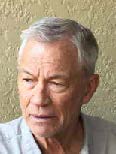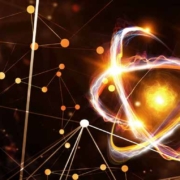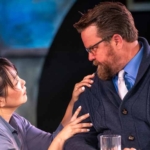NUCLEAR REMEMBRANCES A December Anniversary

By Dave Trecker
The blockbuster movie “Oppenheimer” brought back memories for many of us about the atomic era – the wonderful yet troubling period when splitting the atomic nuclei led to changes we’re still struggling with today.
I’m not old enough to remember Trinity Site or Hiroshima or Nagasaki. But as a former University of Chicago student, I vividly recall some of the fallout.
As many know, the atomic age was born December 2, 1942, when Enrico Fermi, in a squash court under the west stands of Stagg Field, carried out the first controlled nuclear chain reaction. Control rods that soaked up radiation were gradually withdrawn from a plutonium pile until critical levels were achieved; the rods were then replaced.
A cryptic phone call to Washington reported, “The Italian navigator has just landed in the new world.” There would be no turning back.
Anecdotes abound about the stupendous breakthrough. Although activity was overseen by some of the world’s greatest physicists, there was nevertheless concern about what a disastrous mishap could do to the densely populated Chicago south side. For that reason, Arthur Compton, a key administrator of the Manhattan Project, decided not to ask permission from University of Chicago president, Robert Hutchins. Quite remarkably, Hutchins was kept in the dark about the historical experiment on his own campus.
Another anecdote has Fermi famously stopping the trial halfway through, replacing the rods and breaking for lunch. You can’t make this up. After lunch the scientists reconvened and made history. At 3:53 in the afternoon, Fermi announced. “The pile histone critical.” (For a wonderful account of this and related Chicago activities, read “The Pope of Physics” by Gino Segre and Bettina Hoerlin.)
Many years later when my wife and I attended Chicago, we daily walked past what was once the west stands of Stagg Field, then long gone, replaced by a mushroom cloud statue by Henry Moore. A fellow chemistry student used to amuse himself by fiddling with a slide rule in front of the statue as the tour buses streamed by.
Another remembrance was a college friend telling of a dinner party hosted by her father, a surgeon at Billings Hospital, the day the Japanese surrendered. One after another, the scientists told their wives for the first time about their roles in creating the bomb. My friend said in a quivering voice, “I’ll never forget it.”
My major professor at Chicago, a founder of free-radical chemistry that’s important in chain reactions, consulted for the military when I was his student. He steadfastly refused to discuss any of his consulting work.
Segueing to the present, my wife and I just returned from a trip to New Mexico that included a visit to Los Alamos. Streets there are appropriately named Boomer Avenue, Trinity Drive, Bikini Atoll. Security was tight. We were screened at one entry point and allowed to proceed, apparently deemed to be harmless old dotards.
Over 10,000 scientists now work in Los Alamos, housed in laboratories on three mesas spread out across the barren desert. We visited the Fuller Lodge where Oppenheimer and his colleagues met to discuss assembling the first atomic bomb. It’s now an art studio.
One of my lasting remembrances of the nuclear age was a visit to Hiroshima many years ago as part of a business trip to Japan. The purpose of the trip was to promote chemicals for use in the Hiroshima shipyard, one of Japan’s largest. I had a chance to see Ground Zero, where the first atomic bomb was detonated over a wartime city … but I couldn’t bring myself to ask. I just couldn’t. And I missed the opportunity.
It was probably for the better.
Dr. Trecker is a chemist and retired Pfizer executive living in Naples.




Leave a Reply
Want to join the discussion?Feel free to contribute!